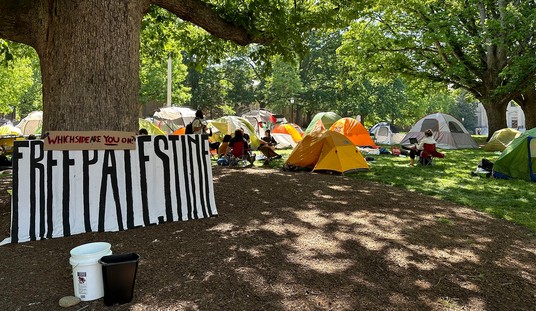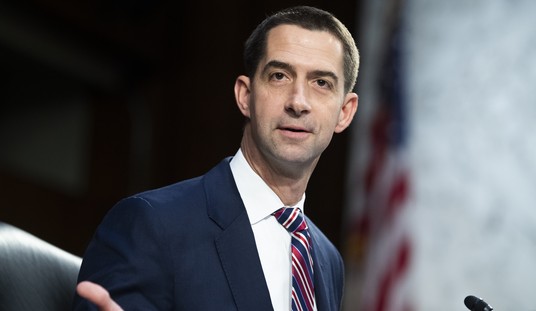 At this writing, Shell Oil is awaiting final permits from the Department of the Interior and EPA for drill two of five wells in the Arctic Ocean offshore Alaska that were originally planned for 2012. Later than normal breakup of pack ice also caused Shell some delays. According to Human Events:
At this writing, Shell Oil is awaiting final permits from the Department of the Interior and EPA for drill two of five wells in the Arctic Ocean offshore Alaska that were originally planned for 2012. Later than normal breakup of pack ice also caused Shell some delays. According to Human Events:
The company is now counting on operations beginning in early August, which gives them two months to work before they have to vacate this fall for the whaling season guaranteed to the native Alaskan Inupiats.
As a former employee (1978-1981), I hold Shell’s technical capabilities in the highest regard. Shell pioneered deepwater drilling and development; if they think they can safely carry out exploration in the hostile and remote (but shallow) waters of the Chukchi and Beaufort Seas, they probably can. I can offer no informed opinions of their specific plan, but it would be a mistake to assume that drilling and producing offshore northern Alaska is a risk-free undertaking.
Perhaps the question we should be asking ourselves is the one posed in a post at the Sustainable Alaska blog, sponsored by Rice University’s Baker Institute of Public Policy:
Does Drilling in ANWR Make More Sense than the Alaskan Offshore?
(Map source: www.northern.org, the Northern Alaska Environmental Center)
Permitting oil production only in the Chukchi and Beaufort Seas suggests that offshore is a superior alternative to drilling in ANWR. Yet this seems to be a questionable conclusion.
And then they tick off the reasons why:
…[P]erhaps most importantly – an oil spill offshore would be far more devastating than one in ANWR.
Arctic researcher for the Pew Environment Group, Dr. Henry Huntington, in a video interview at the Sustainable Alaska site, compares an oil spill in Russia’s Komi Republic (1995) with the Exxon Valdez disaster (1990): “My conclusion is, if you’re going to spill oil, do it on land. I’m not advocating spilling oil anywhere, but for crying out loud, it’s containable and it’s sort of limited; the land doesn’t move. And so, in that sense, the risks associated with problems onshore in ANWR to me seem quite a bit smaller than the risks associated with offshore.”
The 1002 Area [the coastal portion ANWR] may produce as much oil per day as drilling offshore.
 The risk-weighted reserve estimates for both the Chukchi and Beaufort areas offshore exceed the estimated ANWR reserves, but ANWR is more geographically compact and could come on production sooner. ANWR might produce 958,000 barrels per day, compared to the combined estimate for both offshore areas combined of just over 1,000,000. Given an operating window of only a few months per year, it will take many decades to realize the full reserve potential offshore. (For perspective, current total U.S. crude oil production including Alaska is 5.5 million barrels per day.)
The risk-weighted reserve estimates for both the Chukchi and Beaufort areas offshore exceed the estimated ANWR reserves, but ANWR is more geographically compact and could come on production sooner. ANWR might produce 958,000 barrels per day, compared to the combined estimate for both offshore areas combined of just over 1,000,000. Given an operating window of only a few months per year, it will take many decades to realize the full reserve potential offshore. (For perspective, current total U.S. crude oil production including Alaska is 5.5 million barrels per day.)
As it stands right now, the Alaska [treasury] would receive more revenue from ANWR than from onshore oil.
That’s because the Chukchi and Beaufort Seas are in Federal waters, where the Feds own the minerals and thus would enjoy the lion’s share of royalties. ANWR is on land where the State of Alaska owns the minerals.
A pipeline from ANWR might be easier to get approved than one from the Chukchi Sea.
The 300 mile-long Chukchi route would traverse the Teshepuk Lake, an environmentally-sensitive habitat for birds and caribou. Permitting the offshore/onshore line will give environmentalists ample opportunities to object; the pipeline permitting process alone could drag out for years. By comparison, ANWR is only 30 miles from an existing connection to the Trans-Alaska Pipeline System (TAPS), with 100% of that route lying onshore, using proven technology.
In this video (one of several informative interviews), John Payne of the North Slope Science Initiative describes the incredible shrinking footprint of onshore Arctic development, from the 1970s until today:The environmental and subsistence concerns regarding the porcupine caribou [for ANWR] are not much different from those surrounding bowhead whale [offshore].
The post concludes:
Existing evidence suggests something that politicians and environmentalists do not want to admit: if there has to be Arctic drilling – and that is a big “if,” given the substantial risks involved – ANWR may actually make more sense. That should be food for thought for both politicians who advocate drilling in Alaska and activists who fight against it: Have battlegrounds been drawn in the right place?
That’s an excellent question. Environmentalists ascribe an irrational level of symbolic importance to ANWR. In straining at ANWR’s gnat, we have swallowed a moose.
Anyone with an interest in energy policy or Alaskan development should spend some time at the Sustainable Alaska site. As you can tell from its conclusions, it is hardly a site filled exclusively with industry cheerleaders and apologists. Instead, they take a rational, balanced look at the issues and consider input from both sides.
Cross-posted at Maley’s Energy Blog.














Join the conversation as a VIP Member